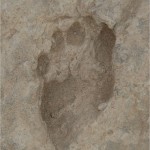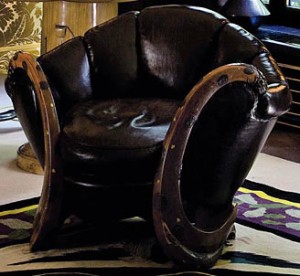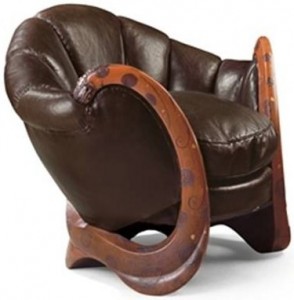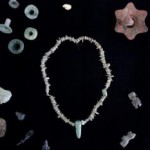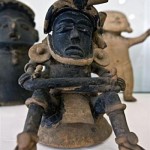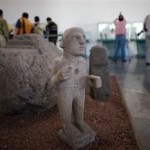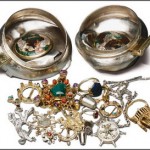 Patrick Mahaffy was having some a fish pond installed in his front yard when the landscapers digging heard a clink and found 83+ prehistoric stone tools.
Patrick Mahaffy was having some a fish pond installed in his front yard when the landscapers digging heard a clink and found 83+ prehistoric stone tools.
Researchers at the University of Colorado-Boulder dated the artifacts to 13,000 years ago when the Clovis people hunter-gatherers roamed the area.
The Clovis culture populated the Americas around the same time as the first people crossed the Bering Land Bridge from Asia, about 13,000 – 13,500 years ago.
The cache is one of only a handful of Clovis-age artifacts uncovered in North America, said Bamforth.
The tools reveal an unexpected level of sophistication, Bamforth said, describing the design as “unnecessarily complicated,” artistic and utilitarian at the same time. […]
The cache was buried 18 inches deep and was packed into a hole the size of a large shoe box. The tools were most likely wrapped in a skin that deteriorated over time, Mahaffy said.
“The kind of stone that’s present — the kind that flakes to a good sharp edge — isn’t widely available in this part of Colorado. It looks like they were storing material because they knew they would need it later,” said Bamforth.
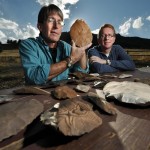 Even cooler than that, there are detectable traces of animal blood and protein on the weapons.The Clovis hunters used these tools to kill and/or butcher camels, horses, sheep and bears.
Even cooler than that, there are detectable traces of animal blood and protein on the weapons.The Clovis hunters used these tools to kill and/or butcher camels, horses, sheep and bears.
Besides the sheer awesomeness of camels in Colorado, this is noteworthy because it’s the first evidence we have of Clovis people eating anything besides woolly mammoths.
Mahaffy will donate almost all of the tools to a museum, but he plans to rebury a few of them where he found them.
“These tools have been associated with these people and this land for 13,000 years,” he said. “I would like some of these tools to stay where they belong.”
